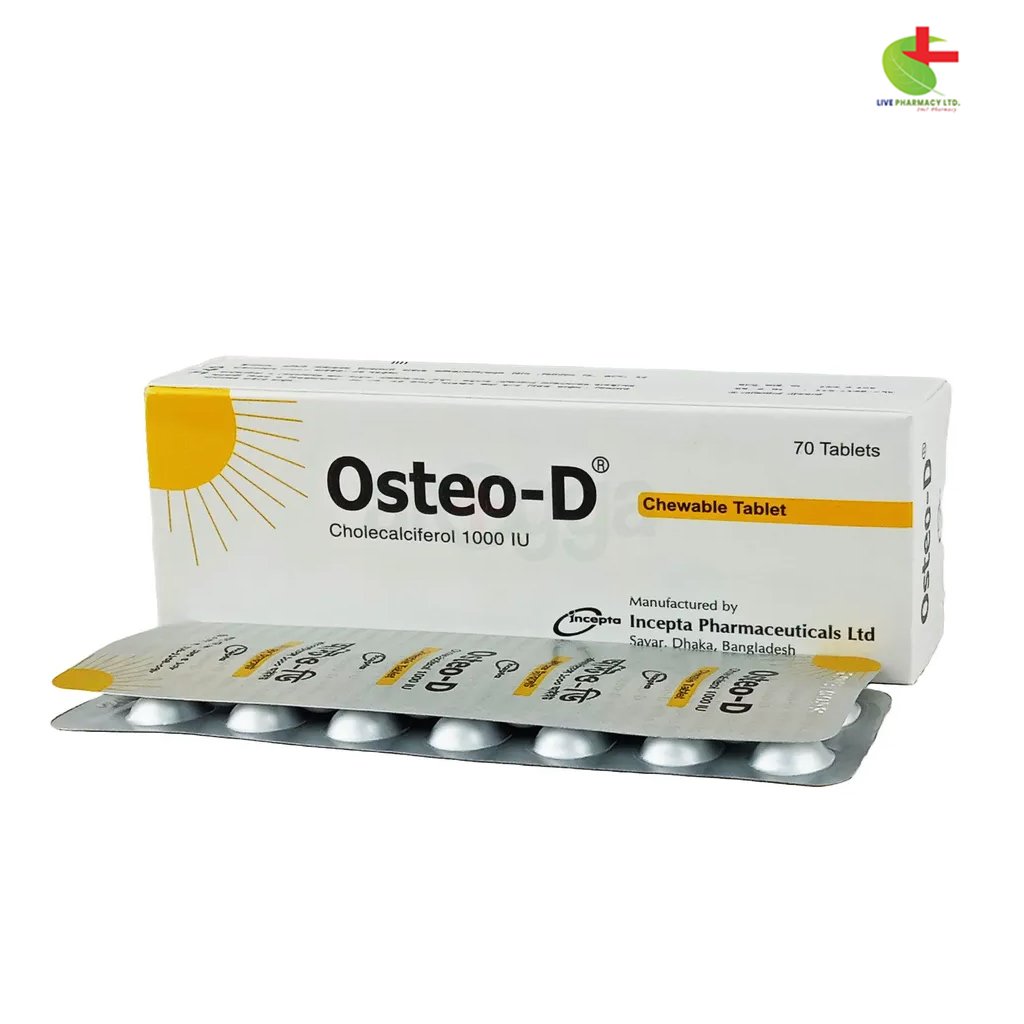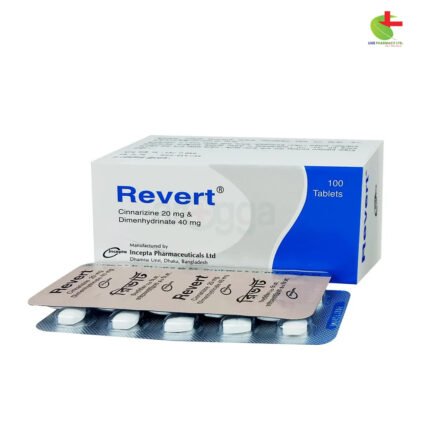Osteo-D 1000
84.00৳ Strip
- Vitamin D3 is crucial for healthy bones and teeth, aiding in calcium and phosphate absorption.
- It helps prevent deficiencies that can lead to rickets and osteoporosis.
- Essential during pregnancy and breastfeeding, it supports maternal health and infant growth.
- Enhances immune function, contributing to overall well-being.
- Available in various forms with flexible dosing options to meet individual needs.
 Brand
Brand
|
Incepta Pharmaceuticals Ltd |
|---|---|
 Generics
Generics
|
Cholecalciferol [Vitamin D3] |
 Type
Type
|
Tablet |
Indications
Vitamin D3 deficiency can arise in individuals with limited sunlight exposure or those lacking sufficient dietary sources. This essential vitamin plays a critical role in the absorption of calcium and phosphate, which are vital for maintaining healthy bones and teeth, thereby preventing conditions like rickets, osteomalacia, and osteoporosis. Additionally, Vitamin D3 is crucial during pregnancy to avert pre-eclampsia and is important for breastfeeding, as it supports the growth of infants. Furthermore, it significantly boosts immune function.
Pharmacology
The active form of Vitamin D3, Calcitriol, acts by binding to Vitamin D receptors (VDRs) found throughout various tissues in the body. As a fat-soluble vitamin, Vitamin D3 has a half-life of approximately 50 days. It is absorbed in the small intestine, where it binds to specific alpha-globulins and is then transported to the liver, where it is converted to 25-hydroxy Vitamin D3 (Calcidiol). A second hydroxylation occurs in the kidneys to form 1,25-dihydroxy Vitamin D3 (Calcitriol), which enhances calcium absorption. Unmetabolized Vitamin D3 is stored in fat and muscle tissues, while it is eliminated through feces and urine.
Dosage & Administration
For Capsules: Adults:
- Treatment of Vitamin D3 Deficiency: 40,000 IU once weekly for 7 weeks; maintenance dosage of 1,400-2,000 IU/day, with serum levels checked after 3-4 months.
- Prevention of Vitamin D3 Deficiency: 20,000 IU every 4 weeks, with higher doses as necessary.
- For Osteoporosis Therapy: 20,000 IU once monthly.
For Capsules: Children (12-18 years):
- Treatment of Vitamin D3 Deficiency: 20,000 IU every 2 weeks for 6 weeks.
- Prevention of Vitamin D3 Deficiency: 20,000 IU every 6 weeks.
For Film-Coated Tablets: 1,000 IU (1-2 tablets) daily, or as directed. Take with food or within 1 hour post-meal.
For Chewable Tablets: 1,000 IU to 2,000 IU daily, or as directed. Consume with food or within 1 hour after a meal, chewing before swallowing.
For Syrup:
- At-risk Patients: 0-1 year: 400 IU/day (2 ml); >1 year: 600 IU/day (3 ml).
- Deficient Patients: 0-1 year: 2,000 IU/day (+50,000 IU/week) for 6 weeks; 1-18 years: 2,000 IU/day for 6 weeks.
For Injections:
- Prevention: Infants on Vitamin D-enriched milk: ½ ampoule (0.5 ml) every 6 months; nursed infants or those not on enriched milk: 1 ampoule (1 ml) every 6 months; adolescents: 1 ampoule every 6 months during winter; pregnant women: ½ ampoule from the 6th or 7th month; elderly: ½ ampoule every 3 months.
- Deficiency Treatment: 1 ampoule (1 ml) which may be repeated 1 to 6 months later, or as prescribed by a physician.
Use only as directed by a registered healthcare professional.
Interactions
Several medications can cause Vitamin D3 deficiencies by affecting its absorption and metabolism, including magnesium-containing antacids, digoxin, thiazide diuretics, cholestyramine, phenytoin, phenobarbital, orlistat, and mineral oil. Corticosteroids like prednisolone may also increase Vitamin D3 requirements.
Contraindications
Vitamin D3 is contraindicated in conditions associated with hypercalcemia, in patients with known hypersensitivity to Vitamin D3 or its components, and in cases of Vitamin D3 toxicity.
Side Effects
While generally well tolerated, side effects may rarely include anorexia, nausea, vomiting, diarrhea, constipation, weight loss, increased thirst, headache, and elevated calcium and phosphate levels in blood and urine.
Pregnancy & Lactation
Doses up to 4,000 IU during pregnancy are considered safe, with a recommended daily intake of 400 IU. Higher doses may be necessary for those deficient in Vitamin D3, guided by a healthcare provider. Vitamin D3 and its metabolites are excreted in breast milk; care should be taken when prescribing additional Vitamin D3 to breastfed infants.
Precautions & Warnings
Monitor plasma calcium levels in patients receiving high doses of Vitamin D3, especially those with renal impairment or during pregnancy and lactation. Consult a healthcare provider before supplementation if using digoxin, thiazide diuretics, or if there are underlying health issues such as liver or kidney disease, primary hyperthyroidism, or granulomatous disease.
Use in Special Populations
The safety and efficacy of Vitamin D3 in children under 12 years have not been established.
Overdose Effects
Overdose may result in hypervitaminosis D.
Therapeutic Class
Vitamin D preparations for bone health.
Storage Conditions
Store below 30ºC, shielded from light and moisture, and out of reach of children.













Reviews
There are no reviews yet.